Bede › Beer › The Soul in Ancient Egypt » Origins and History
Articles and Definitions › Contents
- Bede › Who Was
- Beer › Origins
- The Soul in Ancient Egypt › Origins
Ancient civilizations › Historical places, and their characters
Bede › Who Was
Definition and Origins
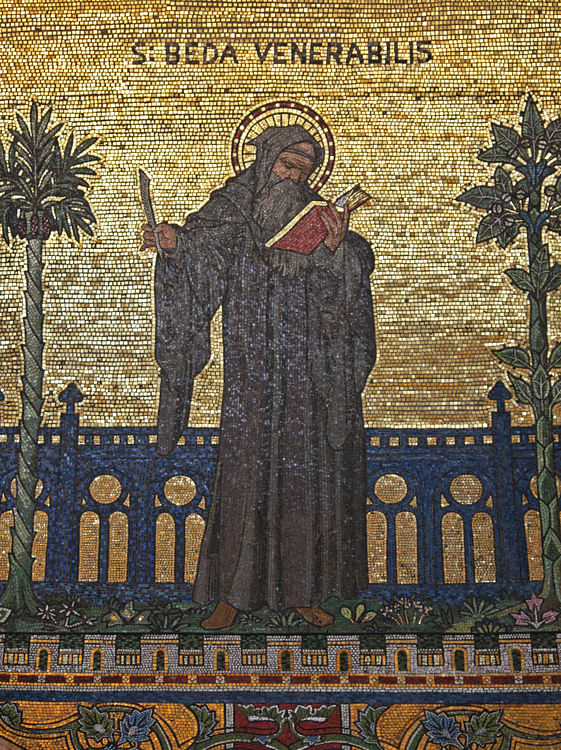
Bede (c. 673 CE - 735 CE) was an English monk, historian, and scholar who lived in the Kingdom of Northumbria. He is at times referred to as the Venerable Bede or Bede the Venerable. He was a monk at the double monastery of Monkwearmouth-Jarrow. Bede was a prolific writer and many of his works have survived to the present day. His work was extremely influential in the generations after his death. His most famous work, the Historia Ecclesiastica Gentis Anglorum ( Ecclesiastical History of the English People ), has been a vital source for the study of early English history for centuries. For this reason, he is remembered by some as the 'Father of English History.'
LIFE
Very little is known about Bede's life outside of what he himself writes in the final chapter of the Historia Ecclesiastica. Bede was born in either 672 or 673 CE; he claims to have been born on the very grounds of the monastery of Jarrow. This would mean he was born in Bernicia, the northernmost of the two Northumbrian kingdoms (Bernicia and Deira were already united into the Kingdom of Northumbria by the time of his birth), in what is now Sunderland. Bede says virtually nothing about his early life and very little external evidence exists. There seems to be some likelihood that he came from a noble family.Throughout his life, he had connections with the wealthy and powerful in Northumbria. In addition to this, some scholars have pointed to the name Beda (Old English for Bede) in a list of Kings of Lindsey (adjacent to Northumbria) as evidence that he was born to a wealthy or influential family.
Bede claims to have been sent to the monastery of Monkwearmouth on the River Wear to be educated by the abbot Benedict Biscop (c. 628 CE - 609 CE). Bede was raised at Monkwearmouth until about 682 CE, when he was transferred to the new abbey at Jarrow, founded by Saint Ceolfrith (c. 642 CE - 716 CE). Bede was made a deacon at the age of 19, several years prior to the canonical age of 25, which may be a sign of his exceptional abilities. He was fully ordained as a priest at the age of 30, and he seems to have written his earliest works around the turn of the 8th century CE for use in teaching in the monastery.His works cover the subjects of history, theology, and science, as well as a range of exegesis and hagiography. Bede is widely credited with helping to spread the use of the anno domini dating method, discussed in his work on chronology, De Temporum Ratione. Bede's adoption of the AD system, used at times in his Historia Ecclesiastica, popularized it for his contemporaries and subsequent generations.

Collected Works of Bede
Bede knew and communicated with many of the prominent clergymen and laymen of his day. As a young man he met Adomnan, then abbot of the important monastery of Iona. He was educated by Saints Benedict Biscop and Ceolfrith, who played crucial roles in the formation of the Church in northern England. He was ordained as a deacon and later as a full priest by Saint John of Beverley, who was the bishop of Hexham and of York at different points in his life and founded the town of Beverley in modern-day East Yorkshire. He regularly communicated with Saint Ecgbert of York, and correspondence between the two of them still survives today. Nothelm, an Archbishop of Canterbury, helped Bede find source material for the Historia Ecclesiastica. On a number of occasions, Bede encountered Wilfrid, the controversial Bishop of York. At one point, he wrote a letter to Wilfrid defending himself against an accusation of heresy. Bede was clearly known to the Northumbrian royalty as well, and he dedicated his greatest work to King Ceolwulf (reigned c. 729-737 CE) who consulted him regularly.
Bede died in May of 735 CE. According to one of his disciples who wrote an account of Bede's final days, he died singing a hymn. The account of Bede's death is quite detailed, describing Bede's illness, his last wishes, and his interactions with those around him. He apparently composed poetry on his deathbed as well. Following his death, he was buried at Jarrow. Though he was considered a saint soon after his death, he was not formally canonised until the end of the 19th century CE. However, he was also named a Doctor of the Church, the only native of Britain to hold this title.
HISTORIA ECCLESIASTICA GENTIS ANGLORUM
Bede's most well-known work is a history of the Christian Church in England. While Bede also provides an in-depth history of England up to his own lifetime, his main focus is the spread of Christianity in his native country. A lengthy discussion of the development of Anglo- Saxon kingdoms up to the 8th century CE is complemented with a catalogue of saints, converted kings, and miracles. Bede pays particular attention to the rivalry between Rome -centered Church practice and the CelticChristian communities which had been present in Britain and Ireland for centuries before the arrival of the Anglo- Saxons.Bede's work is considered one of the most important sources of Anglo-Saxon history for modern-day scholarship. It is a major source for political, social, and religious history in England during the early Anglo-Saxon age.
BEDE'S WORK IS CONSIDERED ONE OF THE MOST IMPORTANT SOURCES OF ANGLO-SAXON HISTORY FOR MODERN-DAY SCHOLARSHIP.
Bede had an exceptionally wide array of sources available to him while writing the Historia Ecclesiastica. The monastery at Jarrow had a famous library which gave the monastic community a reputation as a centre of learning in Northumbria. For the earliest parts of his work, Bede follows classical authors such as Pliny, Eutropius, and Orosius, while his account of the invasions of the Anglo-Saxons is drawn largely from Gildas ' De Excidio et Conquestu Britanniae ( On the Ruin and Conquestof Britain ). For the history of the early English kingdoms up until his own lifetime, Bede relies heavily on more contemporary sources such as Eddius Stephanus' Life of Saint Wilfrid, which contains important accounts of events in the late 7th century CE. He also clearly draws on correspondence and interviews with witnesses of the great events of his own lifetime.
The major subject of Bede's history is the growth of the Church in the English, ie Anglo-Saxon, kingdoms up to the 8th century CE. Religious figures and events throughout this period are described, often in great detail. The lives and careers of secular rulers are recounted as well, though largely in relation to their roles in the spread of Christianity in England. Bishops, monks, saints, and martyrs are profiled throughout the work, as are the kings who sponsored them. A common theme in the Historia Ecclesiastica is the responsibility of kings in the religious issues within their domains. Bede is clearly biased toward the kings of his own homeland of Northumbria. He has particularly strong praise for Edwin and Oswald of Northumbria while also writing largely favourable portrayals of other Northumbrian kings including Æthelfrith and Oswiu.

St. Petersburg Bede
The Historia Ecclesiastica is comprised of five separate books, with a preface in which Bede dedicates his work to Ceolwulf, King of Northumbria at the time of his writing. The first book is largely concerned with the arrival of the Romans in Britain beginning with Caesar ’s invasion in 55 BCE. Much of the book details the spread of Christianity in Britain, and Bede recounts the stories of early martyrs like Saint Alban. He also writes of Britain's struggles in the fourth and fifth centuries, describing in detail numerous imperial usurpations which shook Romano-British society. He describes heresies such as Arianism and Pelagianism, which took root in Britain and caused significant social upheaval. The book ends with the arrival of Augustine of Canterbury, sent by Pope Gregory the Great in 597 to convert King Æthelberht of Kent to Christianity.
Augustine sent to Æthelberht to say that he had come from Rome bearing the best of news, namely the sure and certain promise of eternal joys in heaven and an endless kingdom with the living and true God to those who received it - Bede, Historia Ecclesiastic, 39 (Oxford: Oxford University Press, 2009)
The next two books chronicle the spread and setbacks of Augustine's Roman mission and the coinciding political and military events that often determined the fate of the Church in different places and times. Æthelberht's heirs abandoned the Christian faith for the pagan deities of their ancestors. This is a pattern in a number of Anglo-Saxon kingdoms throughout the Historia Ecclesiastica. Bede heaps scorn on these apostate kings and he simultaneously praises kings like Edwin and Oswald of Northumbria, two of the heroes of his history. Both adopted Christianity and vigorously spread the faith in Northumbria, both also died in battle and were venerated as martyrs soon after their deaths. The third book culminates in the Synod of Whitby, in 664 CE, where King Oswiu of Northumbria settled the Easter Controversy. He decided to follow the Roman practice in the dating of the holiday and against the conflicting native Celtic practice.
King Oswiu began by declaring that it was fitting that those who served one God should observe one rule of life and not differ in the celebration of the heavenly sacraments - Historia Ecclesiastica, 154
The fourth and fifth books detail the reign of Ecgfrith and the decline of the Northumbrian supremacy. Bede also recounts the careers of famous churchmen of the late 7th century CE such as Theodore of Tarsus, the Northumbrian bishop Wilfrid of Ripon, and the great Northumbrian saint Cuthbert of Lindisfarne. The fifth and final book of the Historia Ecclesiastica covers missionary efforts overseas to regions such as Frisia. Here Bede also provides a detailed history of the Easter Controversy. He vigorously denounces the Celtic practice in dating Easter, even going so far as to criticise Saint Cuthbert himself for following it. Bede writes of his own relief that, by the time he was writing, the Irish had been saved from the egregious error of celebrating Easter on the wrong day.
LEGACY
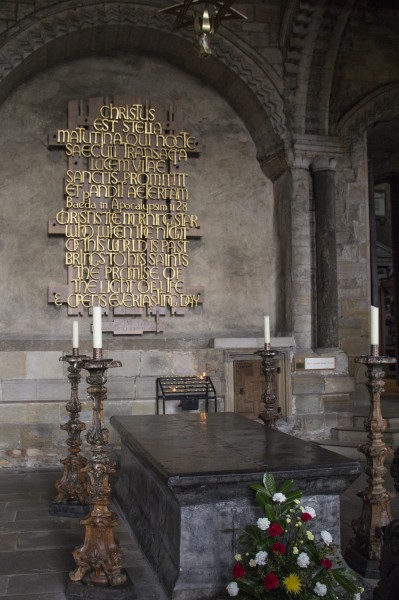
Shrine of Saint Bede the Venerable
The translation of the Historia Ecclesiastica into Old English at the court of Alfred the Great in the 9th century CE has been seen as an important step in the development of English identity, as opposed to the number of unique regional identities of the earlier Anglo-Saxon kingdoms. The use of the term 'English' in Bede's work is a sign of his own notion of a wider cultural identity shared by those living in the southern Anglo-Saxon kingdoms with those living in Northumbria.
Beer › Origins
Definition and Origins
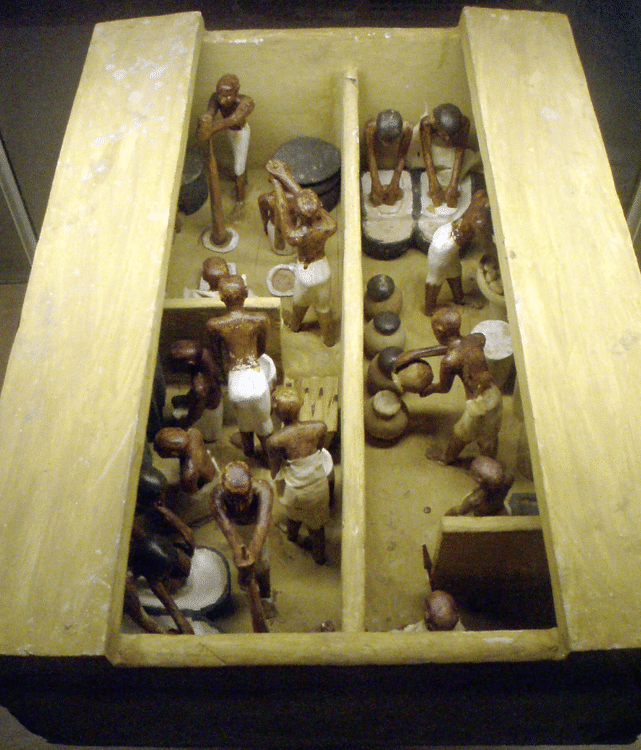
Beer is one of the oldest intoxicating beverages consumed by human beings. In the west, evidence of early beer brewing has been confirmed by finds at the Sumerian settlement of Godin Tepe in modern-day Iran going back to between 3500-3100 BCE. The Sumerians loved beer so much they ascribed the creation of it to the gods and beer plays a prominent role in many of the Sumerian myths, among them, Inanna and the God of Wisdom and The Epic of Gilgamesh. The Sumerian Hymn to Ninkasi (written down in 1800 BCE but presumed to be much older) is both a praise song to the goddess of beer and a recipe for brewing. Brewers were female, most likely priestesses of Ninkasi, and early on beer was brewed by women in the home as a supplement to meals. The beer was a thick, porridge-like drink consumed through a straw and was made from bippar (barley bread) which was baked twice and allowed to ferment in a vat. By the year 2050 BCE beer brewing had become commercialized as evidenced by the famous Alulu beer receipt from the city of Ur dated to that time.
The Sumerians passed on their knowledge of brewing to the Babylonians who further commercialized it and passed laws regulating the beverage. The Code of Hammurabi from Babylon states, among other things, that tavern keepers who pour a 'short measure' of beer would be drowned. Through trade, beer travelled to Egypt where the people embraced the brew eagerly. Egyptians loved their beer as much as the Mesopotamians did and breweries grew up all around Egypt. As in Mesopotamia, women were the first brewers and beer was closely associated with the goddess Hathor at Dendera at an early stage. The Egyptian goddess of beer was Tenenit (from one of the Egyptian words for beer tenemu ) and it was thought the art of brewing was first taught by the great god Osiris himself. Workers at the Giza plateau received beer rations three times a day and prescriptions for various ailments included the use of beer (over 100 recipes for medicines included the drink).Beer was thought to be healthier than drinking water and was consumed by Egyptians of all ages, the youngest to the oldest.
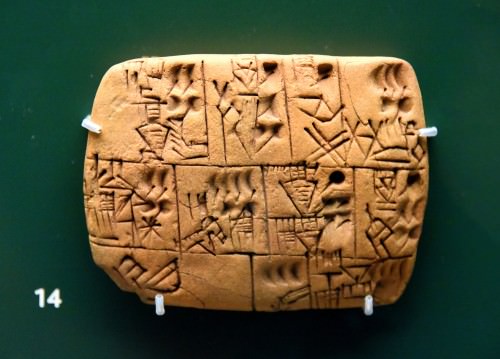
Mesopotamian Beer Rations Tablet
From Egypt, beer traveled to Greece (as evidenced by the similarity of another of the Egyptian's word for beer, zytum and the ancient Greek for the beverage, zythos ). The Greeks, however, as the Romans after them, favored strong wine over beer and considered the grainy brew an inferior drink of barbarians. The Roman Emperor Julian even composed a poem extolling the virtues of wine as a nectar while noting that beer smelled like a goat. That the Romans did brew beer, however, is evidenced by finds at the Roman outpost in Regensburg, Germany (founded in 179 CE by Marcus Aurelius as Casta Regina) as well as at Trier and other places.
The Germans were brewing beer as early as 800 BCE and the early methods mirrored those of the ancient Sumerians.Women were the first brewers in Germany and beer was made from only fresh water, heated, and the best grains. The tradition continued down into the Christian era when monks took up the craft of brewing and sold beer from their monasteries.By 770 CE Charlemagne the Great was appointing brewers in France and, like the Babylonians before him, regulating the use of it. The Finnish epic, The Kalevala (written in the 17th century CE, but based on much older tales) devotes more lines to beer than to the creation of the world and praises the effects of beer in such a way that they would easily be recognizable to anyone from ancient Sumeria to a modern-day drinker.
The Soul in Ancient Egypt › Origins
Ancient Civilizations
At the beginning of time, the god Atum stood on the primordial mound in the midst of the waters of chaos and created the world. The power which enabled this act was heka (magic) personified in the god Heka, the invisible force behind the gods.The earth and everything in it was therefore imbued with magic, and this naturally included human beings. Humanity had been created by the gods, and one lived and moved owing to the magical force which animated them: the soul.
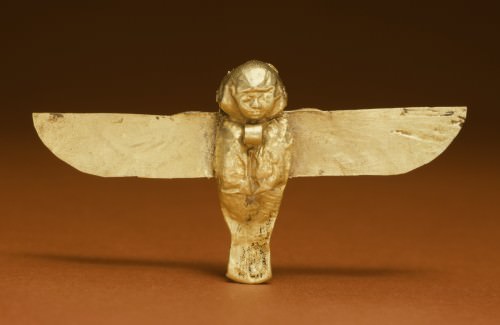
Egyptian Ba Amulet to Ward Off Evil
An individual's life on earth was considered only one part of an eternal journey. The personality was created at the moment of one's birth, but the soul was an immortal entity inhabiting a mortal vessel. When that vessel failed and the person's body died, the soul went on to another plane of existence where, if it was justified by the gods, it would live forever in a paradise which was a mirror image of one's earthly existence.
This soul was not only one's character, however, but a composite being of different entities, each of which had its own role to play in the journey of life and afterlife. The mortuary rituals which were such an important aspect of Egyptian culture were so carefully observed because each aspect of the soul had to be addressed in order for the person to continue on their way to eternity.
THE PARTS OF THE SOUL
The soul was thought to consist of nine separate parts which were integrated into a whole individual but had very distinct aspects. Egyptologist Rosalie David explains:
The Egyptians believed that the human personality had many facets - a concept that was probably developed early in the Old Kingdom. In life, the preson was a complete entity, but if he had led a virtuous life, he could also have access to a multiplicity of forms that could be used in the next world. In some instances, these forms could be employed to help those whom the deceased wished to support or, alternately, to take revenge on his enemies. (116)
In order for these aspects of the soul to function, the body had to remain intact, and this is why mummification became so integral a part of the mortuary rituals and the culture. In some eras, the soul was thought to be comprised of five parts and in others seven, but, generally, it was nine:
THE SOUL WAS NOT ONLY ONE'S CHARACTER BUT A COMPOSITE BEING OF DIFFERENT ENTITIES, EACH OF WHICH HAD ITS OWN ROLE TO PLAY IN THE JOURNEY OF LIFE AND AFTERLIFE.
The Khat was the physical body which, when it became a corpse, provided the link between one's soul and one's earthly life.The soul would need to be nourished after death just as it had to be while on earth, and so food and drink offerings were brought to the tomb and laid on an offerings table. Egyptologist Helen Strudwick observes that "one of the most common subjects for tomb paintings and carvings was the deceased seated at an offerings table laden with food" (188). The dead body was not thought to actually eat this food but to absorb its nutrients supernaturally. Paintings and statues of the dead person were also placed in the tomb so that, if something should happen to damage the body, the statue or painting would assume its role.
The Ka was one's double-form or astral self and corresponds to what most people in the present day consider a 'soul.' This was "the vital source that enabled a person to continue to receive offerings in the next world" (David, 117). The ka was created at the moment of one's birth for the individual and so reflected one's personality, but the essence had always existed and was "passed across the successive generations, carrying the spiritual force of the first creation" (David, 117). The ka was not only one's personality but also a guide and protector, imbued with the spark of the divine. It was the ka which would absorb the power from the food offerings left in the tomb, and these would sustain it in the afterlife. All living things had a ka - from plants to animals and on up to the gods - which was evident in that they were, simply, alive.
The Ba is most often translated as 'soul' and was a human-headed bird aspect which could speed between earth and the heavens and, specifically, between the afterlife and one's corpse. Each ba was linked to a particular body, and the ba would hover over the corpse after death but could also travel to the afterlife, visit with the gods, or return to earth to those places the person had loved in life. The corpse had to reunite with the ka each night in order for the ka to receive sustenance, and it was the job of the ba to accomplish this. The gods had a ba as well as a ka. Examples of this are the Apis bull which was the ba of Osiris and the Phoenix, the ba of Ra.

Egyptian Soul House
The Shuyet was the shadow self which means it was essentially the shadow of the soul. The shadow in Egypt represented comfort and protection, and the sacred sites at Amarna were known as Shadow of Ra for this reason. Exactly how the shuyetfunctioned is not clear, but it was considered extremely important and operated as a protective and guiding entity for the soul in the afterlife. The Egyptian Book of the Dead includes a spell where the soul claims, "My shadow will not be defeated" in stating its ability to traverse the afterlife toward paradise.
The Akh was the immortal, transformed, self which was a magical union of the ba and ka. Strudwick writes, "once the akh had been created by this union, it survived as an 'enlightened spirit,' enduring and unchanged for eternity" (178). Akh is usually translated as 'spirit' and was the higher form of the soul. Spell 474 of the Pyramid Texts states, "the akh belongs to heaven, the corpse to earth," and it was the akh which would enjoy eternity among the stars with the gods. The akh could return to earth, however, and it was an aspect of the akh which would come back as a ghost to haunt the living if some wrong had been done or would return in dreams to help someone they cared for.
The Sahu was the aspect of the Akh which would appear as a ghost or in dreams. It separated from the other aspects of the soul once the individual was justified by Osiris and judged worthy of eternal existence.
The Sechem was another aspect of the Akh which allowed it mastery of circumstances. It was the vital life energy of the individual which manifested itself as the power to control one's surroundings and outcomes.
The Ab was the heart, the source of good and evil, which defined a person's character. This was the spiritual heart which rose from the physical heart ( hat ) which was left in the mummified body of the deceased for this reason: it was the seat of the person's individuality and the record of their thoughts and deeds during their time on earth. It was the ab which was weighed in the balances against the white feather of truth by Osiris and, if found heavier than the feather, it was dropped to the floor where it was devoured by the monster Amut. Once the heart was eaten, the soul ceased to exist. If the heart was found lighter than the feather, the soul was justified and could proceed on toward paradise. A special amulet was included in the mummification of the corpse and placed over the heart as a protective charm to prevent the heart from bearing witness against the soul and possibly condemning it falsely.
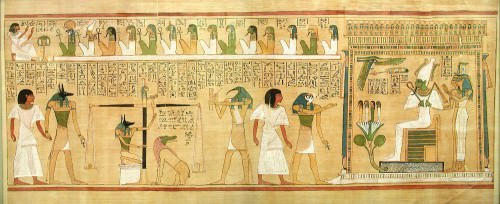
Book of the Dead
The Ren was one's secret name. This was given to one at birth by the gods, and only the gods knew it. Scholar Nicholaus B. Pumphrey writes, "the only way that the fate or destiny can change is if a creature of higher power changes the name. As long as the name of the being exists, the being will exist throughout eternity as part of the fabric of the divine order" (6-7). The renwas the name by which the gods knew the individual soul and how one would be called in the afterlife.
THE MORTUARY RITUALS & THE SOUL
The mortuary rituals were observed to address each aspect of the soul and assure the living that the deceased would live on after death. Mummification was practiced to preserve the body, amulets and magical texts were included to address the other spiritual facets which made up an individual. The dead were not forgotten once they were placed in their tomb. Rituals were then observed daily in their honor and for their continued existence. Rosalie David writes:
In order to ensure that the link was maintained between the living and the dead, so that the person's immortality was assured, all material needs had to be provided for the deceased, and the correct funerary rituals had to be performed. It was expected that a person's heir would bring the daily offerings to the tomb to sustain the owner's ka. (118)
If the family was unable to perform this duty, they could hire a ' Ka -servant' who was a priest specially trained in the rituals. A tomb could not be neglected or else the person's spirit would suffer in the afterlife and could then return to seek revenge. This, in fact, is the plot of one of the best known Egyptian ghost stories, Khonsemhab and the Ghost, in which the spirit of Nebusemekh returns to ask help of Khonesmhab, the High Priest of Amun. Nebusemekh's tomb has been neglected to the point where no one even remembers where it is and no one comes to visit or bring the necessary offerings. Khonsemhab sends his servants to locate, repair, and refurbish the tomb and then promises to provide daily offerings to Nebusemekh's ka.

Khonsemhab and the Ghost
These offerings would be left on an altar table in the offering chapel of those tombs elaborate enough to have one or on the offerings table in the tomb. The ka of the deceased would enter the tomb through the false door provided and inhabit the body or a statue and draw nourishment from the offerings provided. In case there was a delay for whatever reason, a significant quantity of food and drink was buried with those who could afford it. Strudwick notes how "the immediate needs of the deceased were met by inhuming a veritable feast - meat, vegetables, fruit, bread, and jugs of wine, water, and beer - with the mummy" (186). This would ensure that the departed was provided for but did not negate the obligation on the part of the living to remember and care for the dead.
Offerings Lists, which stipulated what kinds of food were to be brought and in what quantity, were inscribed on tombs so that the Ka -servant or some other priest in the future could continue provisions, even long after the family was dead.Autobiographies accompanied the Offerings Lists to celebrate the person's life and provide a means of lasting remembrance.For the most part, people took the upkeep of their family's graves and the offerings seriously in honor of the departed and knowing that, someday, they would require the same kind of attention for the sustenance of their own souls.
LICENSE
Article based on information obtained from these sources:with permission from the Website Ancient History Encyclopedia
Content is available under License Creative Commons: Attribution-NonCommercial-ShareAlike 3.0 Unported. CC-BY-NC-SA License